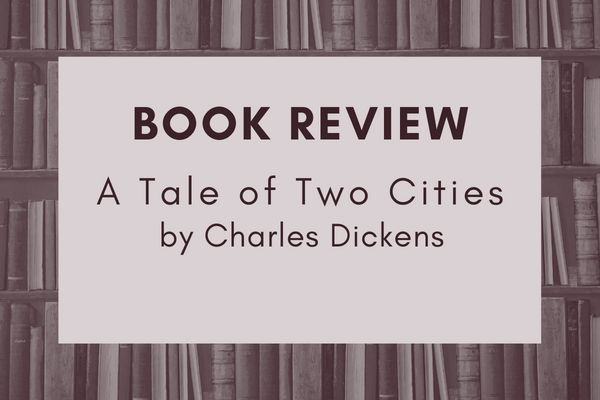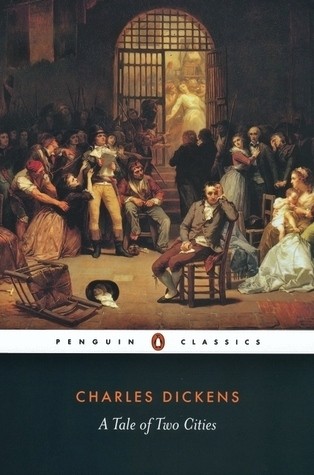I’ve been wanting to read A Tale of Two Cities by Charles Dickens for a long time. My daughter raved about it, and, after visiting Paris and reading the historical fiction novel The Women of Chateau Lafayette, I had to learn more about The French Revolution. Dickens did not disappoint. He shed light not only on the dark days of The Reign of Terror, but also have relevance for our social structures and challenges in the 21st century.
I’ve read other pieces by Dickens, including Great Expectations [link] They tend to be DENSE. However, Dickens wrote A Tale of Two Cities as a series, with installments published at regular intervals. This format probably compelled him to write in shorter chapters with what we call in the writing business a “read on prompt” at the end of each segment. The result is a story with masterful pacing, fascinating character development, and genuine surprises.
Premise
The two cities in Dickens’ classic are London and Paris. The cast features an odd assembly of characters. The elderly Doctor Manette, recovering from years of unlawful imprisonment in the Bastille. Manette’s long estranged, loving daughter Lucie. Her fiery and devoted maid Ms. Pross. Throw in the ruthless devotee to the French Republic, Madame Defarge, and the savage “Lady Guillotine”, and you have the makings for a riveting story that highlights the very best and the very worst of human nature.
What I liked
Dickens uses personification, imagery, and irony to create a tense and intelligent environment for his story. In an early scene in the book, characters scramble to sip up red wined spilled on a cobblestone street. The spreading red liquid foreshadows the blood that will run in the streets of Paris during the Reign of Terror.
Dickens also does an excellent job of developing an ensemble cast. We learn so much about them – from their bristling hair to their troubling drinking habits. I found many of the characters compelling and interesting— something that distinguishes A Tale of Two Cities from most other classics I’ve read. (There just aren’t that many characters I LIKE in classics.)
The language and dialogue are poetic and literary without being unreachable. Dickens doesn’t over explain. He drops hints and lets the reader figure things out. Even though the story takes place during a terrible time in history, the observations and clever banter of the characters often made me laugh out loud.
Most importantly, and probably why this novel remains such an important book in the cannon of classic literature, A Tale of Two Cities gives thoughtful consideration to social class and the consequences of merciless oppression. Dickens demonstrates the very best and very worst ways men choose to treat their fellow men- not just what they do, but how they get there. The themes of A Tale of Two Cities are still relevant today as we come to terms with how we in America have treated marginalized populations for centuries. And what we should do about it moving forward.
Word nerd notes
I listened to audio book which featured a fantastic performance by Simon Callow. He places emphasis in just the right places to accentuate the humor and the horror of A Tale of Two Cities.
Do you have a classic you’d like to recommend? Read any other Dickens? What did you think?
Thanks for getting nerdy with me!




I’m planning a seminar. Please come. Surf in and sign up. https://www.facebook.com/groups/584313098624317/
Very cool. Thanks for letting me know!
“Tale of Two Cities” is a wonderful novel.Although Sydney Carton’s love is not returned, he is still strong and has courage, and manages to get happiness is saving Lucie from a grief which might be worse than death. (There is also a certain independence in that.) It is also very exciting. The outrage one feels at the conduct of the Marquis St. Evremonde when his carriage has run over a plebeian child, and at the road-mender’s later account of the child’s father’s punishment for the retribution
he takes is a powerful thing for a reader. Plus the turther outrage when the paper Dr. Manette wrote in prison (where he had been sent because he knew too much and wouldn’t keep quiet about the other fould outrage the Marquis had committed long before tha incident) is even stronger. Still, the outraged revolutionists do wrong to sentence the innocent Charles Darnay, who had had nothing to do with his uncle’s foul deed. And Carton’s final act in rescuing him is moving. I think it is a great novel, and I enjoyed reading it very much. (and reading it, and reading it again, and…)
Wow! I have met another ToTC super fan! Yes, it has much to say about justice and injustice, and is worth multiple reads. Thank you for sharing your enthusiasm! 🙂